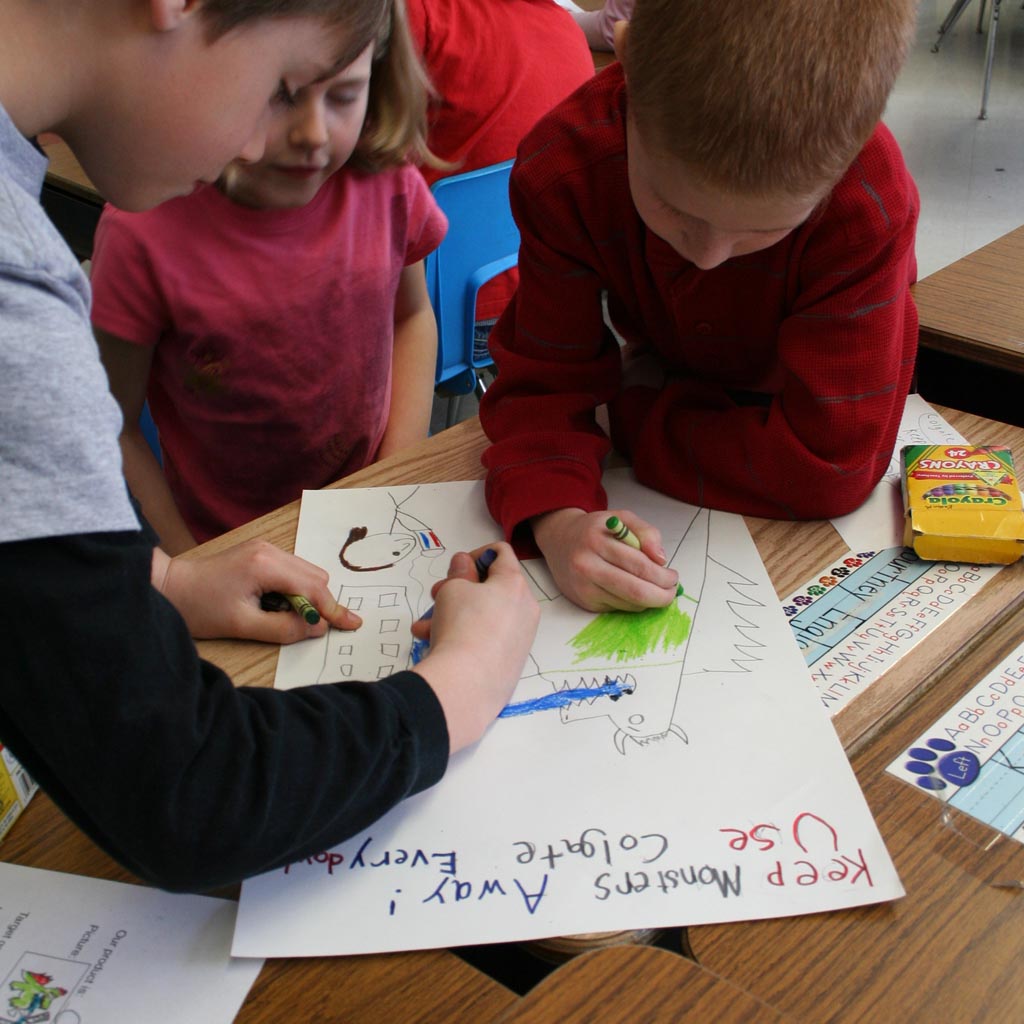When I embarked on my tenth year of teaching as an adjunct professor at UW Oshkosh, my daughter was in second grade. While describing the course I was involved with at the time to her teacher, she asked me if I could do a teaching unit on advertising. Explaining advertising concepts to seven and eight year olds in elementary school? The idea immediately challenged me to start thinking in a different way.
Here’s the exercise the second grade teacher and I developed for the exercise, What Makes Great Advertising? Since teaching this unit for the first time in 2012, I have adapted the presentation for third, fourth and fifth graders.
Introducing Advertising as a Career
First, I ask the class if they know what I do for a living. I explain that I create advertising and why I love doing it. I have them relate to my profession based on activities they do in the classroom in words they can relate to, like writing and art.
Next, I explain that I like to teach others about advertising and that I do this every year with college students. I showcase the advertising from my Radio, TV Advertising Course so show them examples of campaigns my students created for real companies they’d recognize when they go to the grocery store to pick up cheese and ice cream. They enjoy this experience because of the humor incorporated in several of the creative executions of ads.
Collaborate With the Teacher to Create Good Pedagogy
I provide the elementary school teacher with the basic concepts and allow the teacher to create his or her own learning aids. We divide the kids into small groups to create a great poster ad for their assigned product. Usually, I incorporate the same product my college students had been assigned during the semester. The students are allowed to define their target group. You would be surprised at how adept students are at understanding if an ad is targeted at them or someone else. They also decide as a team how they are going to get attention in the ad (colors, people and actions). Finally, they need to describe how someone can purchase the product.
All of the planning is done on their learning sheets before they go to the posters to design their ads. I help the groups understand headlines, the power of using three benefit statements and the call-to-action.
When I do the advertising activity for fourth and fifth graders, I introduce the AIDA model. I explain it was developed in 1925, over 85 years ago! Here’s how I explain it to them:
Attention: When you are asked to pay attention, what do you do? You listen and look at the person talking to you. That’s what people who make ads want you do to. They want to you listen or read what it says and look at the pictures.
Interest: People who make advertising want you to be interested in what they are selling. In addition to paying attention to their ads, they want you say to yourself “Wow, that product is interesting to me! Tell me more!”
Desire: Desire is a fancy word meaning “to want something”. People who create ads want to say “I’ve paid attention to this ad, I like what I see and hear, and now I want that product!”
Action: Finally, the people who make ads want you to buy their product. As a child, how can you buy a product?
- Save your money
- Ask your parent
- Ask another family member
Finally, I introduce the last part of the AIDA model, developed about 15 years ago. It’s called AIDA with a C. The C stands for “credibility”. What that means is that the ad has something in it that makes you believe in the product the company is selling.
I ask the class to describe how advertising people provide credibility in ads that are made for kids to see. Here are some of the examples we discuss:
- Advertisers show kids enjoying the product
- They choose age-appropriate music
- They use words kids like
After the lesson is complete, we take pictures of the finished work and do a showcase, where the students explain their advertising posters. To this day, I still have former participants tell me how fun the exercise was to do. One activity in elementary school can open minds to the amazing career opportunities in marketing and advertising!




Leave a Comment >>